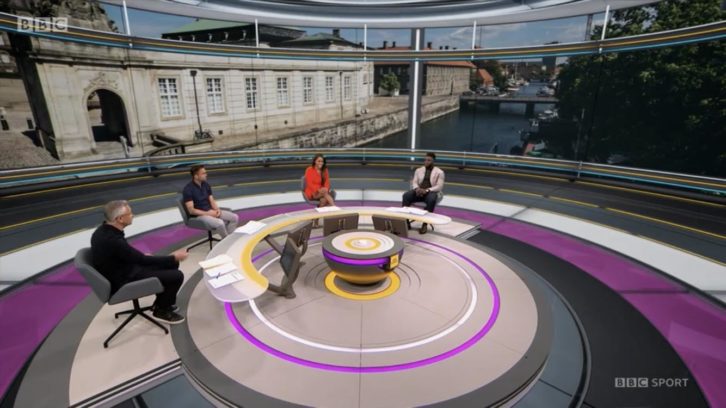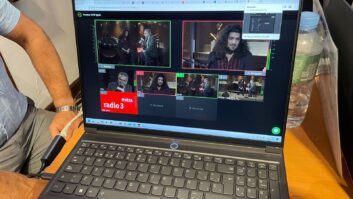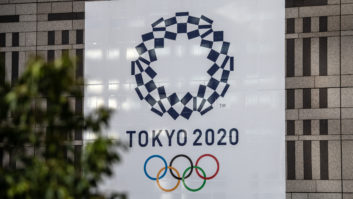The team at BBC R&D have revealed some of the secrets behind the UHD HDR iPlayer feeds for this summer’s Euro 2020 football championship.
The BBC made “most” of the games it broadcasting available in Ultra HD via iPlayer.
The feed for each match was handed over to the BBC by UEFA’s main broadcast centre in the Netherlands. It was produced in UHD HDR, which was supplied to iPlayer. For BBC One HD, the feed was downscaled to 1080i25, reveals a blog post by senior R&D engineer, Simon Thompson.
The BBC R&D team created a mapping that took the standard-compliant (ITU-R BT.709) SDR video from drones and net-cams and mapped it in to the HLG HDR video feed in such a way that colours, shadows and mid-tones subjectively match, added Thompson. “Many small cameras have proprietary HDR outputs, which could be transformed to HLG HDR, and this is an area that needs more work,” he continued.

Meanwhile, camera shots that included a VR view, such as the main studio at dock10 in MediaCity, had to be rendered in ITU-R BT.709 colour space and then mapped in to the ITU-R BT.2100 HLG colour space. The BBC’s Wembley outside broadcast (OB) studio, which had no VR elements, used cameras in native ITU-R BT.2100 HLG colour space. It also meant that graphics overlays (either the BBC’s or UEFA’s) were limited in saturation and brightness.
In terms of replay servers, Thompson said there are still issues in implementing replays in HDR. “Servers are now available to buy using 10-bit codecs but are not widely deployed yet. An increasing number of HDR cameras are being used in production, and HDR portable edit facilities are becoming available. Hopefully, we will soon see HDR replays and inserts being introduced,” said Thompson.
“The choice between using 10-bit HDR replay servers at 3840x2160p50 or 1920x1080p50 is largely down to the availability of replay feeds from the host broadcaster and the cost. Operating a replay server at 3840x2160p50 compared to 1920x1080p50 requires around four times the server storage and databus bandwidth.”
Thompson’s full blog post is available to read here.







